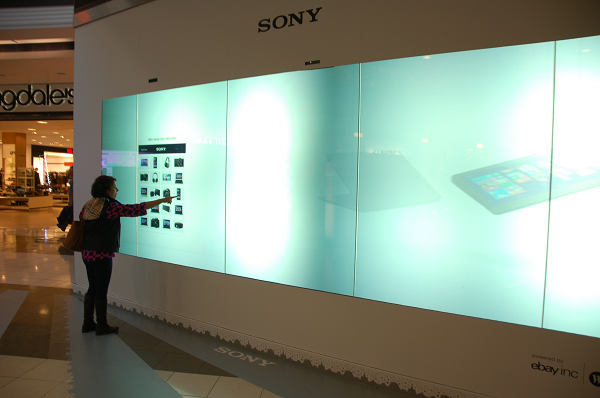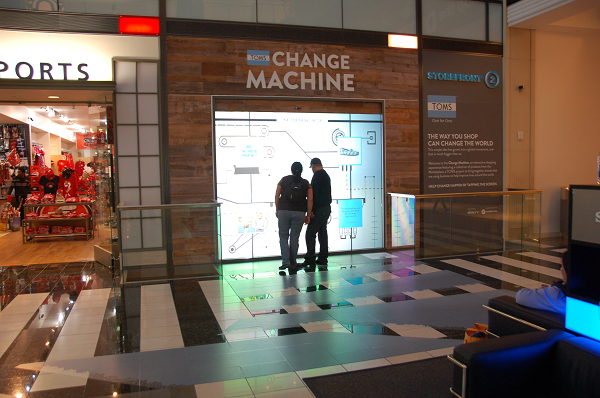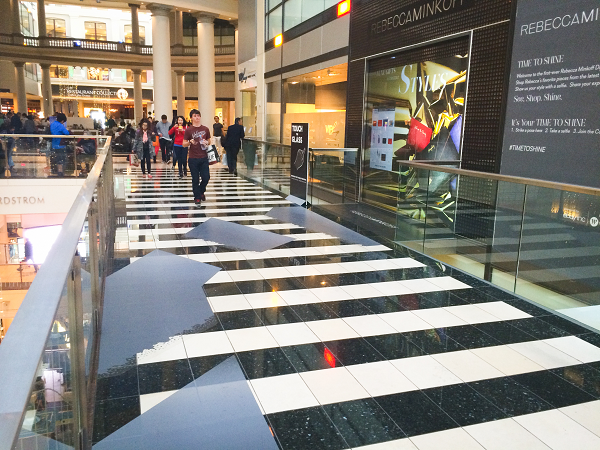Shoppers Avoid Eye Contact With Digital Storefronts
Looking back at 2013, it’s easy to see all of the great innovation occurring within the digital store. Most retailers focused on omnichannel fulfillment, whether it was click-and-collect or ship-from-store. Some retailers like B&Q in the U.K. began to experiment with dynamic pricing in-store. If 2013 was about launching new services, 2014 will be about shedding light on the actual performance of these initiatives.
One example of new digital store technology is eBay’s digital storefronts. Last year in June, eBay made a splash by deploying a digital storefront for Kate Spade, allowing customers to browse and buy products from a giant digital screen strategically placed over a vacant physical storefront. This digital storefront replaces the static posters that mall operators use to cover up vacant stores. This past holiday season, eBay expanded the pilot and deployed a series of digital storefronts in a popular San Francisco mall. These new digital storefronts are a few blocks from the Forrester offices, and I capitalized on the close proximity to conduct some research on how the technology was being used and received. eBay launched three digital storefronts: a small format Rebecca Minkoff storefront, a small format TOMS storefront, and a large Sony storefront in front of an escalator exit.
In mid December, I spent two hours observing customer interactions with the digital storefronts (some might even call it lurking). After an informal assessment of almost 500 shoppers who passed by these digital storefronts, I came to the following conclusions:
- The digital storefront was not a disruptive format. My hypothesis was that the digital storefronts would be a disruptive marketing vehicle. I was wrong. Shoppers avoided looking that the display; only 9% of shoppers looked at the digital storefront compared to 26% who looked at a comparable physical store.
- Shoppers interacted with the digital storefronts due to the unique display format and not the product. The small format digital storefront got just over one percent of shoppers who passed by to touch the screen and engage with the application, while the large Sony digital storefront at the exit of the escalator received 4% engagement by passers-by. In comparison, the small format physical store (my control group) had just under one percent of customers enter the store and engage with the brand. Even though the engagement rates were higher for the digital stores, I did not see any customers add product to the shopping cart. Most were curious to know how the digital storefronts worked, and quickly moved on from the storefronts after a few taps.
- Customers we observed did not see the value of purchasing on digital storefronts. Most customers I spoke with indicated that they would rather view actual product since they are already in the mall. One Gen-Y female customer indicated that she prefers privacy when shopping online, and felt the digital store was not a replacement for either the physical store or online shopping.
I applaud eBay for continually innovating around the digital store, and can only imagine the insights they are learning from these trials as well as future iterations that build on this early deployment. However, in its current state, the digital storefronts did not add sufficient value to shoppers in the Age of the Customer compared to physical stores.
Over the next few months, I’ll be releasing a series of research around the digital store including an overview on beacons and location analytics. In the meantime, I’d like to hear your thoughts on digital storefronts and the digital store in general. Please feel free to schedule an inquiry or briefing with me to discuss this topic in greater detail.
Sony digital storefront:

TOMS digtial storefront:

Rebecca Minkoff digital storefront:

Celestine SF – control store located across from the digital storefronts
